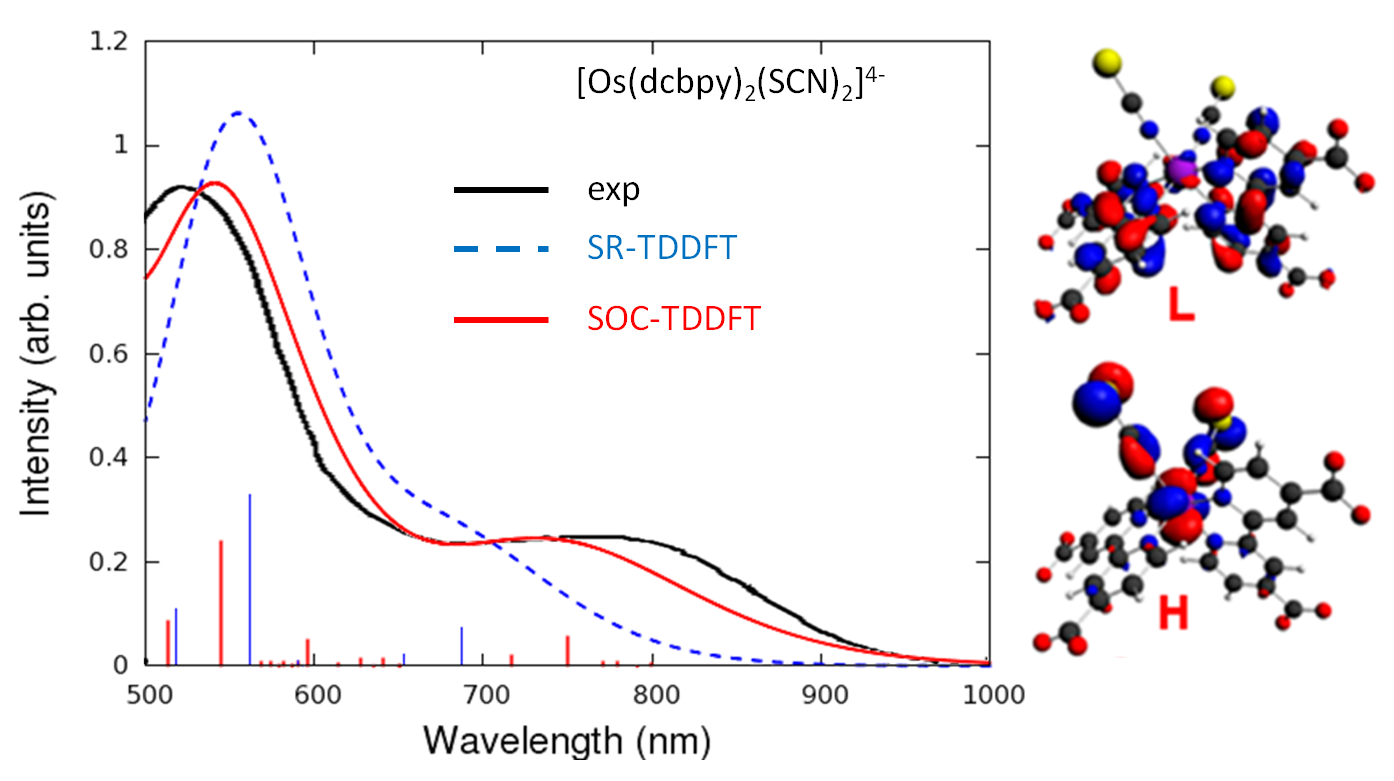Spin-orbit coupling increases dye-sensitized solar cells efficiency
The incident photon-to-current-conversion efficiency (IPCE) of dye-sensitized solar cells depends, amongst others, on the light-harvesting capabilities of the dye. In two recent studies, researchers from the Computational Lab for Hybrid/Organic Photovoltaics of CNR-ISTM Perugia, Italy, demonstrate that spin-orbit coupling (SOC) strongly affects the absorption properties of Os transition metal complexes.
A scalar relativistic approach misses the experimentally observed red / near-infrared features of Os-dyes, which are, however, well reproduced with SOC-TDDFT. While the spectrum of Ru-dyes is much less affected by SOC, their IPCE is nevertheless enhanced by subtle broadening of the low-energy absorption peaks.
It is thus argued that a SOC-TDDFT is an extremely useful tool for designing new and efficient sensitizers characterized by enhanced absorption in the red part of the solar spectrum.

Comparison of experimental spectrum of [Os(dcbpy)2(SCN)2]4- with SR-TDDFT and SOC-TDDFT calculations.
E. Ronca, F. De Angelis, and S. Fantacci, TDDFT Modeling of Spin-Orbit Coupling in Ru and Os Solar Cell Sensitizers, J. Phys. Chem. C, 118, 17067-17078 (2014)
S. Fantacci, E. Ronca, and F. De Angelis, Impact of Spin–Orbit Coupling on Photocurrent Generation in Ruthenium Dye-Sensitized Solar Cells, J. Phys. Chem. Lett., 5, 375-380 (2014)